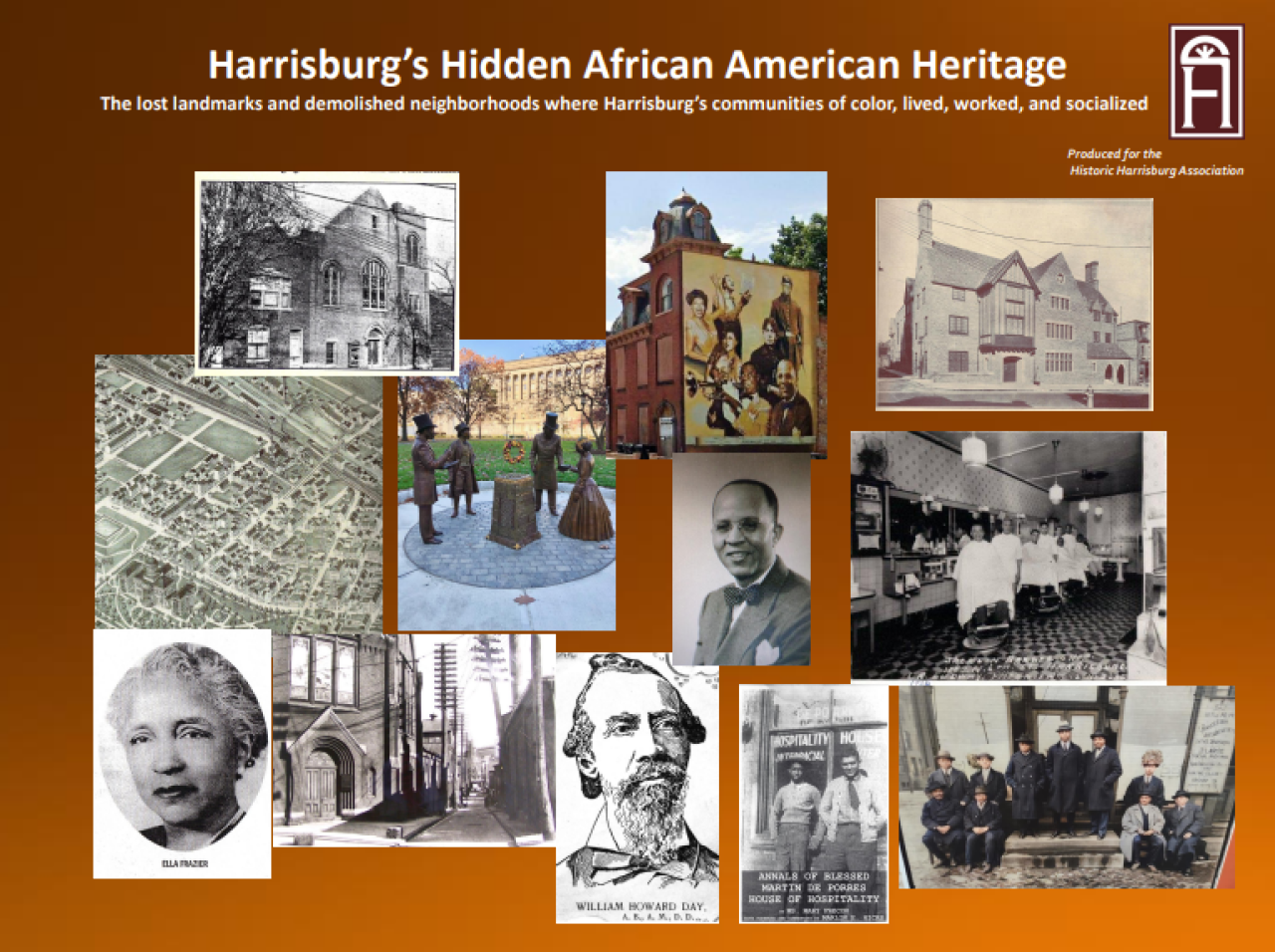
Harrisburg Historic Association

Harrisburg Historic Association

Harrisburg Historic Association
In the Old Eighth Ward and the Seventh Ward of Harrisburg, thousands of primarily black homes and hundreds of Black-owned businesses were demolished, wiping out connections to a community that thrived during the nineteenth and early twentieth centuries.
The demolitions within the Old Eighth Ward took place as Pennsylvania’s government expanded into what’s now known as the Capitol Complex. The Seventh Ward was demolished due to urban renewal activity, to make way for high-rise buildings and garden apartments.
In tribute to the lost neighborhoods, the Harrisburg Historic Association created an exhibit called “Remembering Harrisburg’s Vanished African-American Neighborhoods”. The exhibit shows the historic photography, atlases, maps of buildings, landmarks and people who lived in the Eighth and Seventh Ward. 3D technology is used to show the buildings that exist now, in those neighborhoods, and what existed in the past.
Caleb Jackson Jr., representative for the Historic Harrisburg Association and former resident of one of the vanished Harrisburg black neighborhoods, said unfortunately compensation wasn’t given to those who lost their homes because most residents didn’t own the properties they lived in. Owners of homes, churches and businesses that were required to move due to the demolitions were compensated for their property.
“You could imagine a neighborhood that loses nine hundred houses and the people have to move; their whole way of life changes because in a neighborhood you have a neighborhood lifestyle and that’s lost,” Caleb said. “So you have to go to another neighborhood and establish a new neighborhood lifestyle, and that’s hard for some people to do.”
Jeb Stuart, preservation advisor for the Historic Harrisburg Association said, The Commonwealth Monument was created in remembrance of the Old Eighth Ward. It’s located on the Capitol grounds on Walnut St. in Harrisburg and consists of a 3D model of the Old Eighth Ward in the 1880s and four statues of four significant black people in Harrisburg, T. Morris Chester, William Howard de, Frances Ellen Harper and Jacob Compton.
Cole Goodman, Harrisburg native and global outreach ambassador for the World Affairs Council of Harrisburg, said the Harrisburg Historic Association exhibit is important because the next generation of black Harrisburg residents can see where they came from to reach ahead to where they’re going.
“I coached soccer in the city and after talking to Mr. Caleb and Jeb, I went to some of our high school boys and I asked them, ‘Do you know what the Jackson house is?’ ‘Do you know what the eighth word was?’ And almost all of them said, I have no idea,” Goodman said. “But there was a want and a vigor to learn about it. So we will be bringing our boys (to the exhibit). I want to say that this is a rallying cry that everyone needs to go and see this exhibit because you can’t know your future if you don’t understand this.”
The exhibit is being held at the Historic Harrisburg Association at 1230 N Third St. in Harrisburg.
The days of journalism’s one-way street of simply producing stories for the public have long been over. Now, it’s time to find better ways to interact with you and ensure we meet your high standards of what a credible media organization should be.